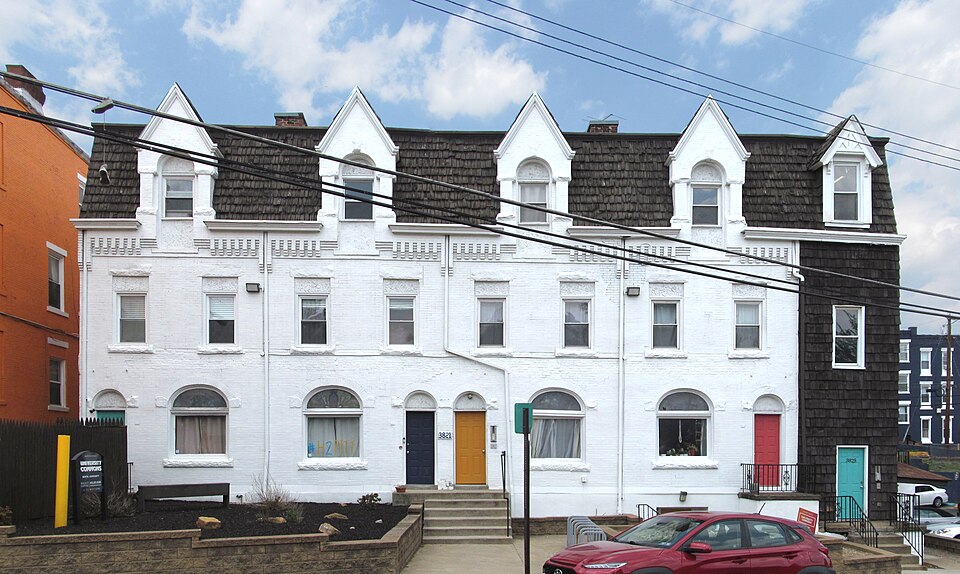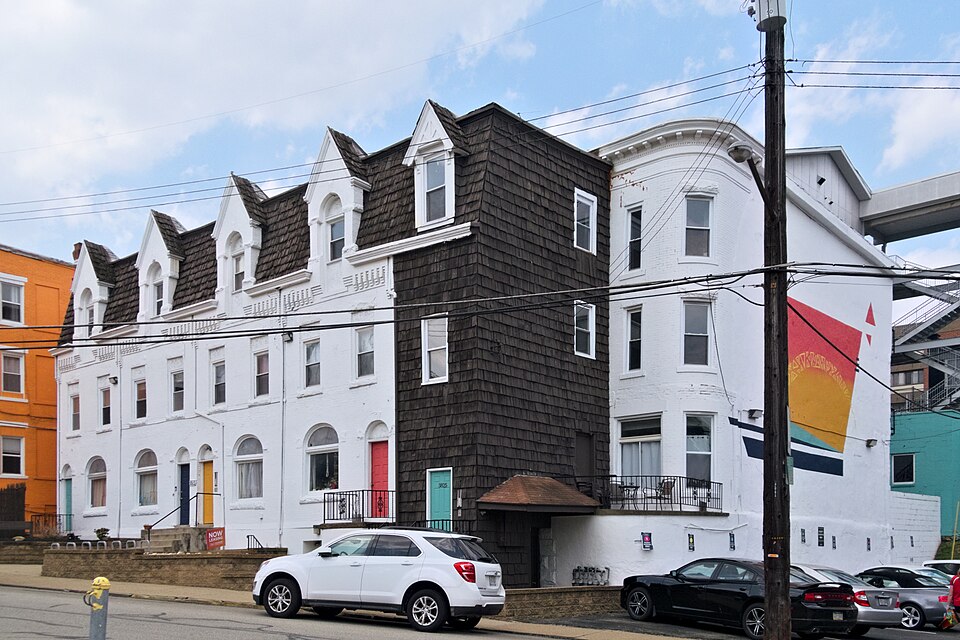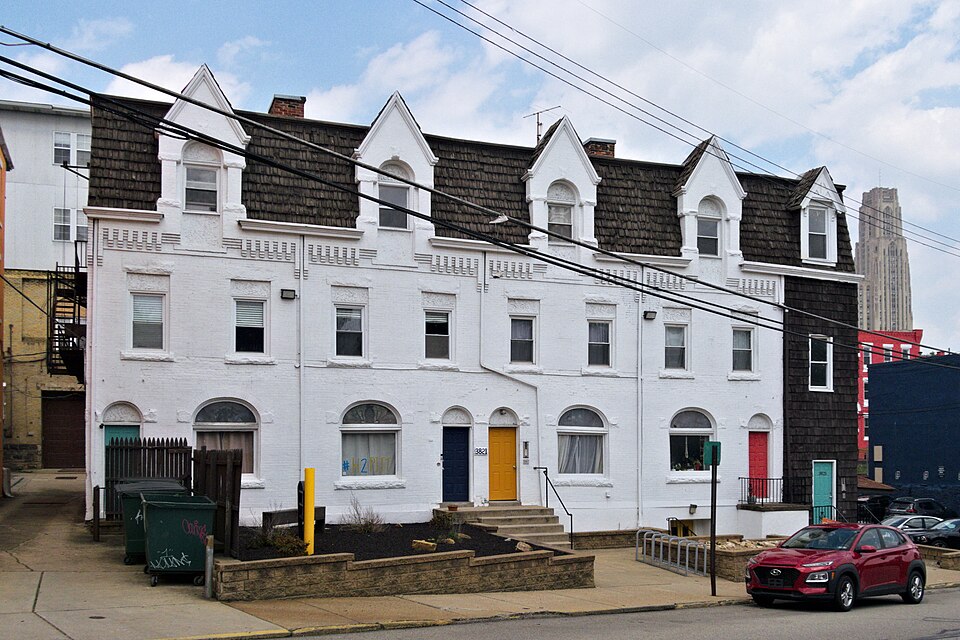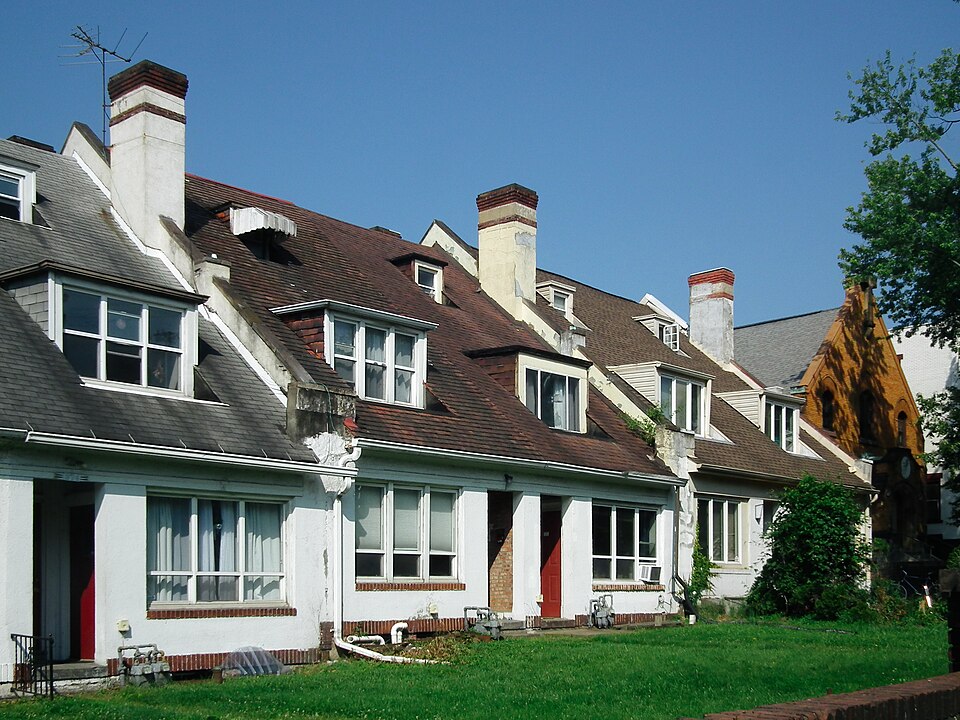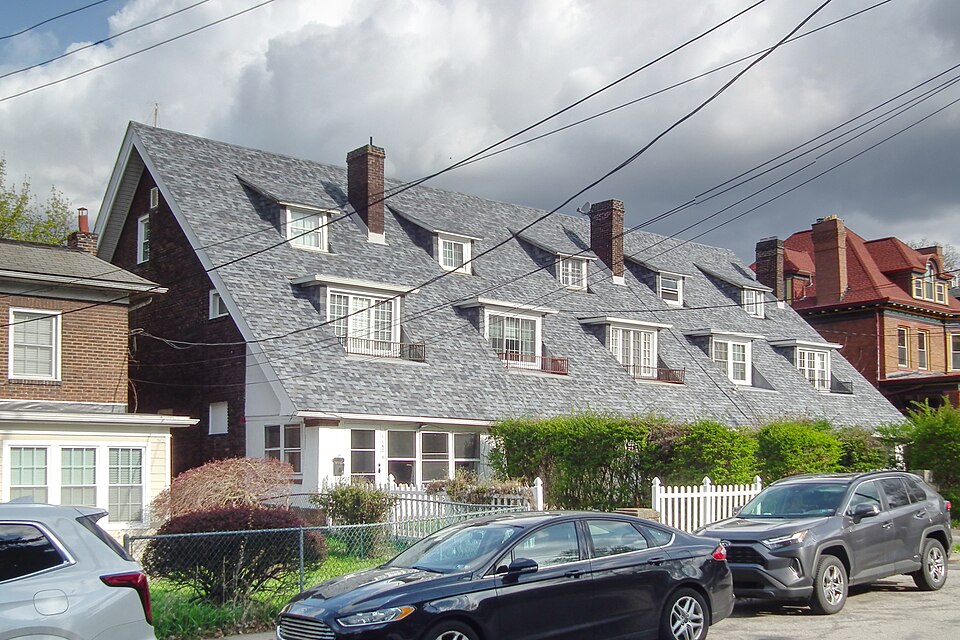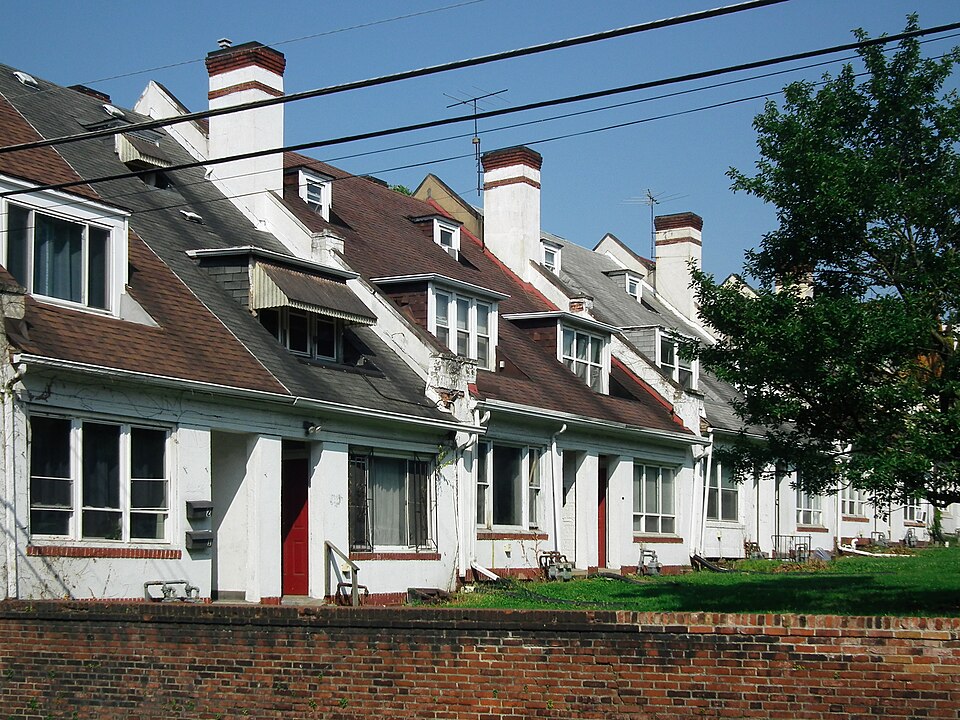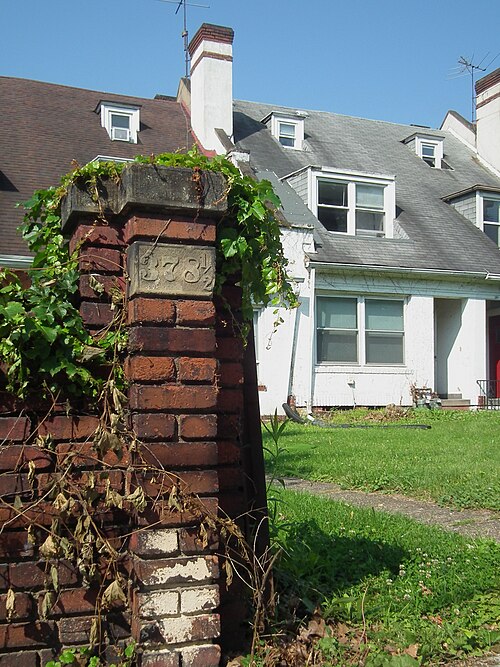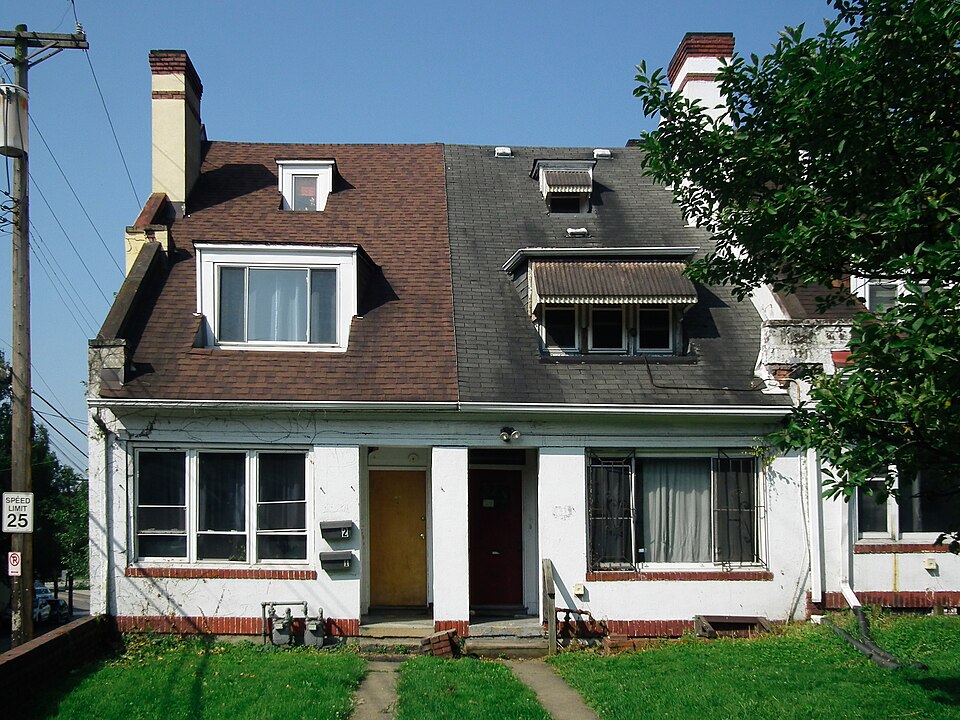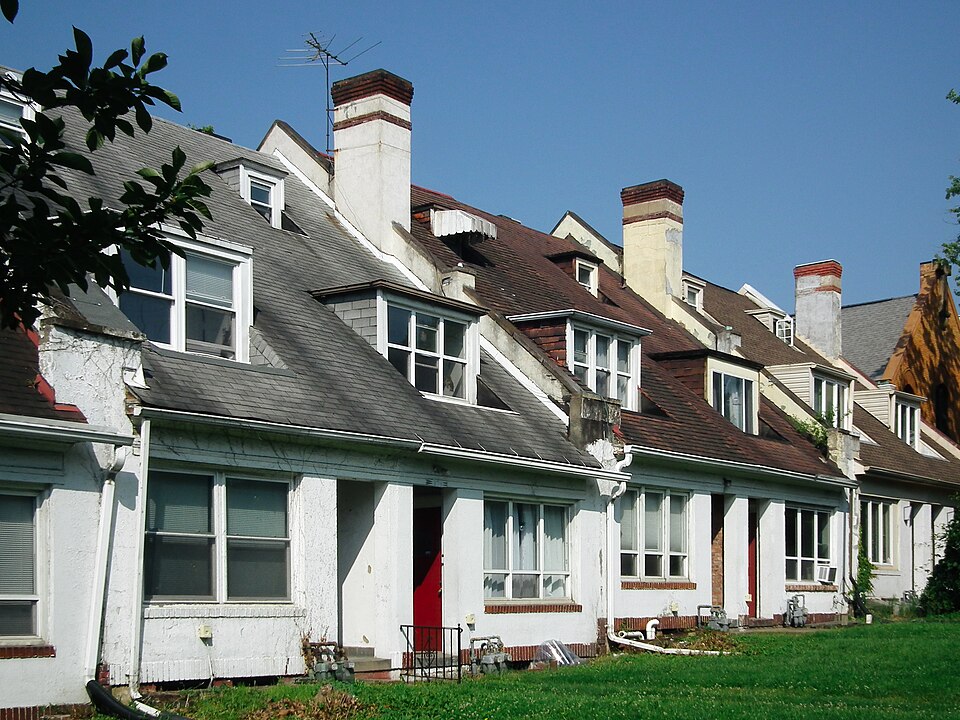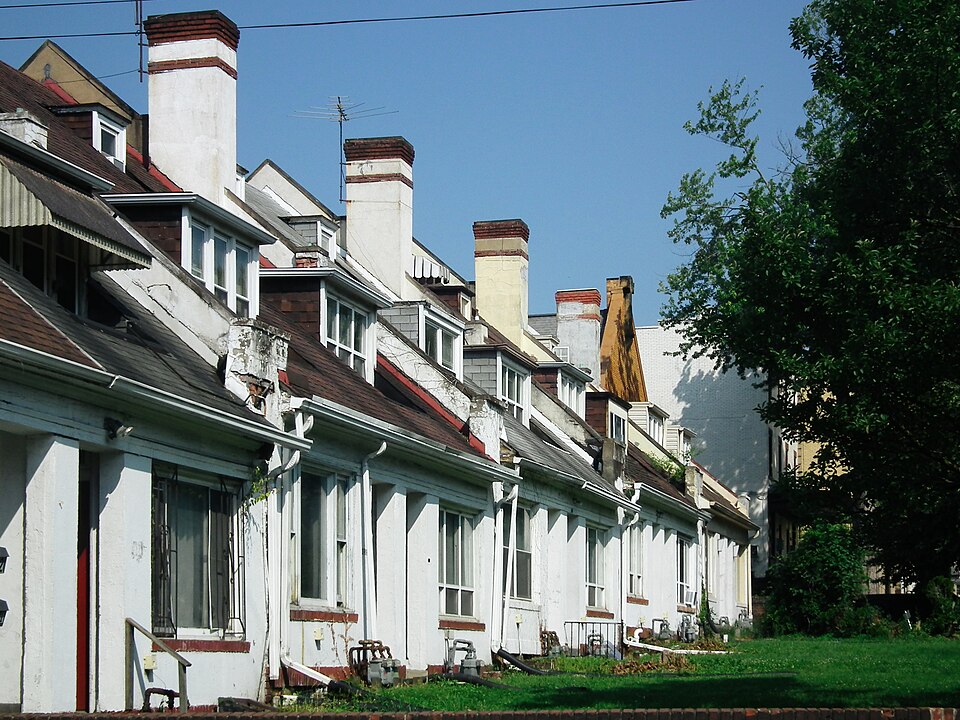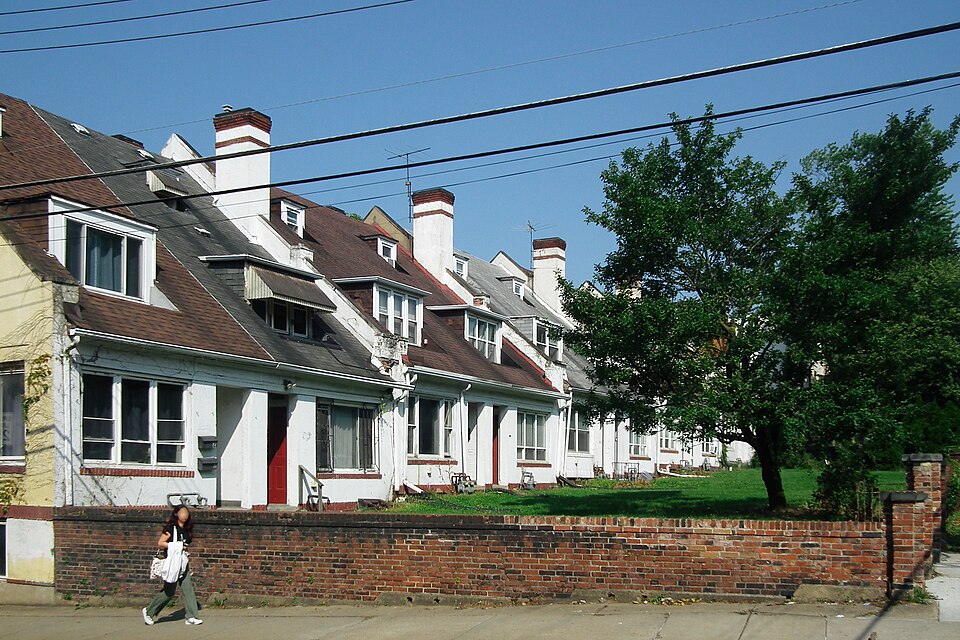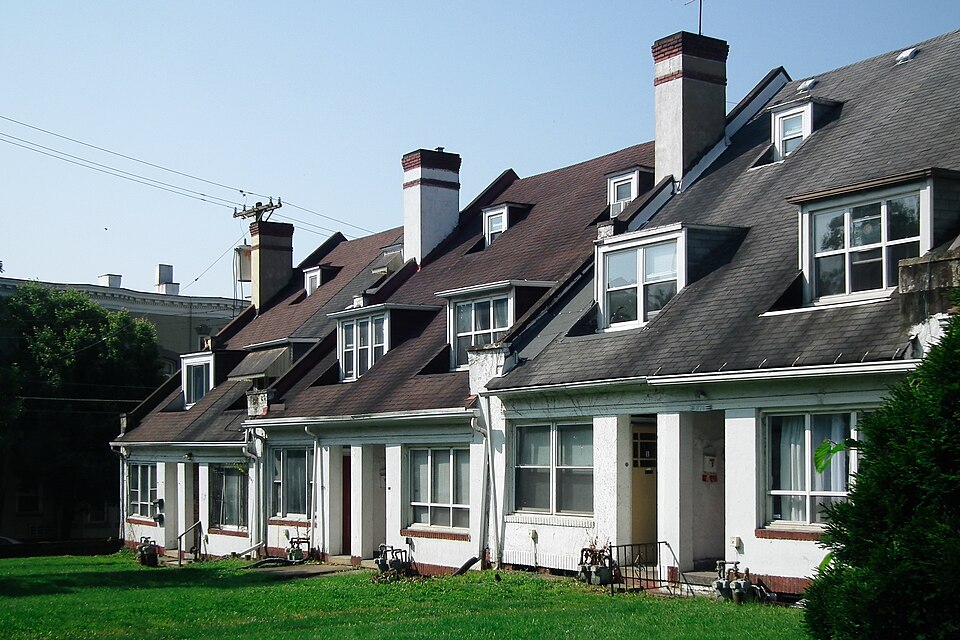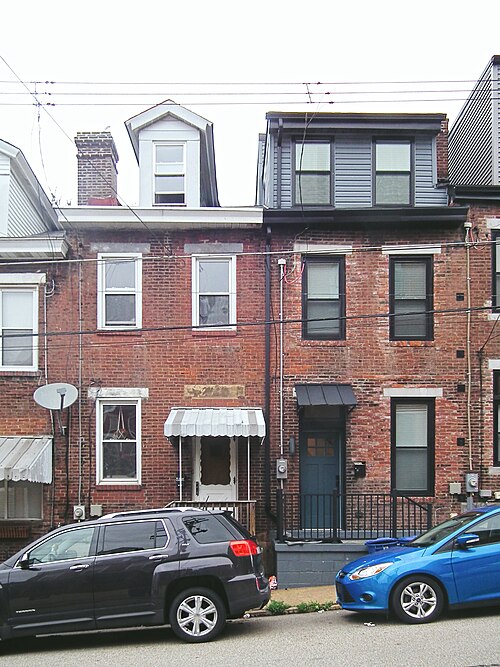
This row of houses on Alder Street in Shadyside has been attributed to Frederick Scheibler, Pittsburgh’s most famous home-grown modernist, by the guesswork of certain architectural historians. But Martin Aurand, Scheibler’s biographer, could find no evidence that Scheibler designed them. Then who was responsible for this strikingly modern early-twentieth-century terrace?

Old Pa Pitt is confident that he has the answer. The architect was T. Ed. Cornelius, who lived all his life in Coraopolis but was busy throughout the Pittsburgh area. We can be almost certain of that attribution because the houses in the middle of the row are identical to the ones in the Kleber row in Brighton Heights:

And the Brighton Heights houses were the subject of a photo feature in the Daily Post of March 5, 1916, in which T. Ed. Cornelius is named as the architect.

The Alder Street houses are bookended by larger double houses, one of which—this being Pittsburgh, of course—is an odd shape to fit the odd lot.


So remember the name of T. Ed. (which stands for Thomas Edward) Cornelius when you think of distinctive Pittsburgh architecture. It is quite a compliment to have your work mistaken for Frederick Scheibler’s.

Comments

















